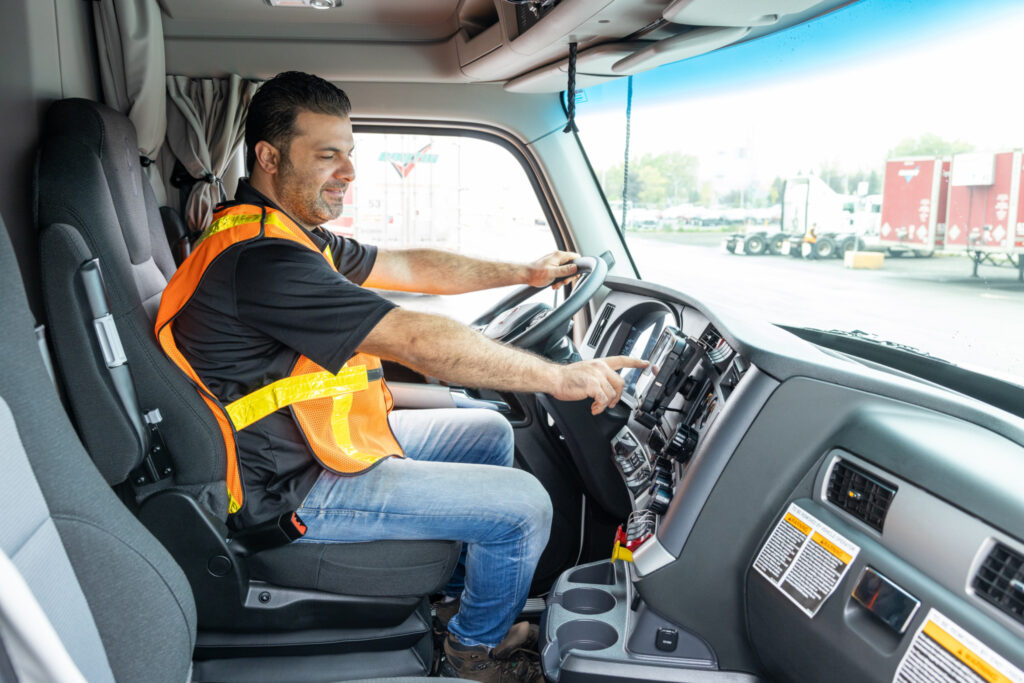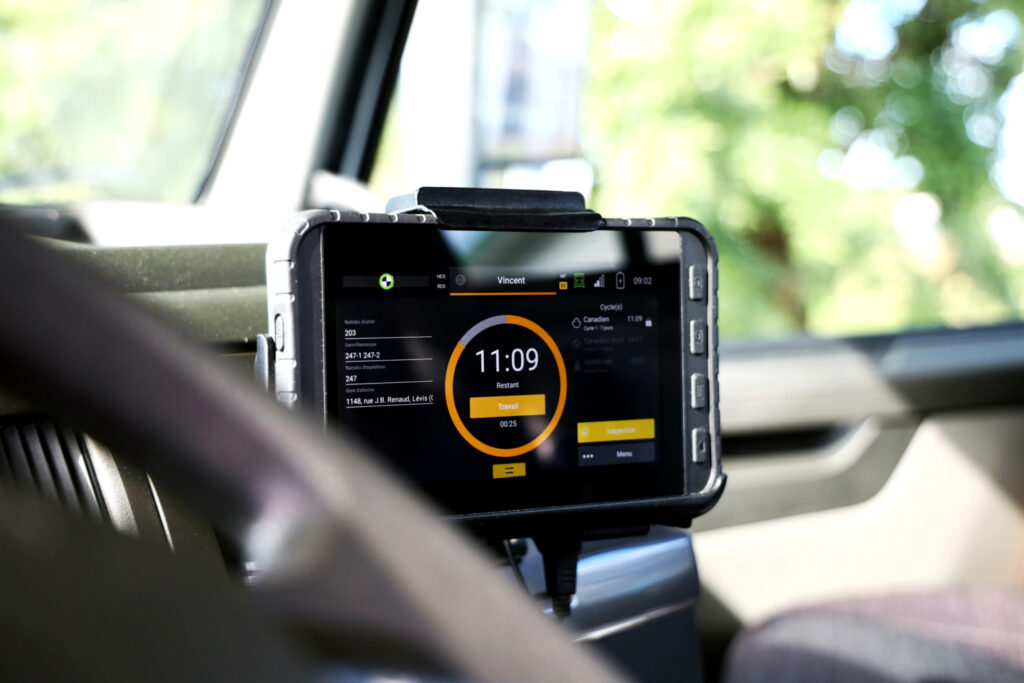Latest ELD enforcement delay brings frustration, relief
It’s just weeks to June 2022, the month the Canadian trucking industry was told to expect full enforcement of a long-awaited electronic logging device (ELD) mandate that’s been on the books for a year. But yet another enforcement delay – to January 2023 – has been met with equal measures of exasperation and relief.
Among those frustrated is the Canadian Trucking Alliance (CTA), which has been lobbying for an ELD mandate for more than a decade. Some ELD vendors – including some that aren’t yet certified – were also opposed to the enforcement delay, while other vendors felt it was needed.
The Private Motor Truck Council of Canada is one of the most outspoken organizations that supported the enforcement deferral. It cited the need for more approved devices – 22 devices from 15 ELD vendors had been certified when the latest delay was announced in March. (The list had grown to 39 devices as of early May).
Suppliers not to blame
But Isaac Instruments co-founder and CEO Jacques DeLarochelliere wants the industry to know the delay in no way reflects a failing on the supplier side. He takes issue with the suggestion there aren’t enough certified vendors to proceed with enforcement, citing internal market share data that indicates three ELD suppliers – Isaac, Omnitracs and Trimble, all with certified devices – cover more than 75% of the Canadian fleet market.
“I’d agree with that a year ago,” he says of arguments that there weren’t enough certified devices to commence enforcement. “Now, that’s far from true. The coverage is good.”
He said the top eight suppliers cover roughly 90% of the Canadian fleet market, so there’s no need for dozens of additional approved devices to ensure compliance.
But some ELD vendors caught up in the quagmire of certification say the process has taken longer than expected and that more time was needed for reasons beyond their control.

“I think there are a lot of suppliers that remain to be certified,” contends Anthony Mainville, president of Geotab reseller Attrix. “There was a huge delay, first in approving additional third-party certification parties. And by the time they were announced I think it delayed a lot of ELD providers. There was a six-month delay we weren’t expecting.”
He anticipates as many as two dozen ELD devices could still be mired in the certification process. “It’s not just a question of certifying one telematics device. We also have to certify the legacy devices to make sure our existing clients aren’t stuck with an incompatible device,” Mainville says.
Orbcomm is one of those suppliers caught up in the certification process longer than expected. It initially encountered delays with the first authorized certification body, and chose another body when others were approved.
“When they added a second [certifying body] we started from scratch with them,” Lina Paerez, Orbcomm’s vice-president of marketing explains. “We think we’re literally now on the verge [of certification]. On the technical side, we already support all the functionality required for compliance. We just need that official stamp of approval.”
ERoad finds itself in a similar situation, bogged down in the certification process. But product manager Mike Soricelli says, once the certification is granted, a simple over-the-air update is all that’s required to ensure compliance with the Canadian regulation. “There’s no exchange of hardware,” he says.
Even some yet-certified suppliers didn’t favor the latest enforcement delay.
“We were not hoping for the delay,” says Stephen White, senior business development manager – heavy truck, with Geotab. But he acknowledges there are some benefits. “It gives vendors more time to get certified and the certification process takes quite a bit longer than some anticipated. It could be because of technical reasons or because they’re certifying a more complicated solution. It also gives fleets more time to prepare for it. With Covid, fleets had a lot of resources tied up. Especially if you’re a small fleet – if you have 10 trucks and three employees, your resources are all tied up someplace else.”
Enforcement agencies and some provincial governments also needed more time to prepare. The ELD technical standard detailed how data would be transmitted from the device to the enforcement officer, but the receiving end of the equation has yet to be technically resolved. This frustrates DeLarochelliere.
“We’ve had plenty of time,” he says. “In 2015, we knew it was coming to the U.S. That was six or seven years ago, so why are we not ready? I feel vendors did their part.”
He worries drawn-out government processes like soliciting requests for proposals to select a system for enforcement’s end of the data handoff could delay things further. Asked if he’s confident there’ll be no further enforcement delays, DeLarochelliere was blunt: “No. I certainly hope not, but I can’t say I’m confident there won’t be.”
Further raising the prospect of further delays is the fact four provinces – B.C., Quebec, Nova Scotia, and Newfoundland – have yet to introduce regulations or legislation required to mandate ELDs. The CTA wants those provinces that have committed to the mandate to proceed with or without the remaining four jurisdictions by the January 2023 enforcement deadline.
“There should be no more moving the goalposts on dates and no more delays. The time to finally start this important safety regime is past due,” CTA president Stephen Laskowski said in a release when the latest delay was announced.

So, what now?
As Isaac Instruments’ DeLarochelliere notes, most Canadian fleets are already using a certified, or soon-to-be-certified ELD. For those fleets, the enforcement grace period means little. For fleets using a platform that isn’t yet certified, it’s not out of line to ask vendors for a status update.
“If you haven’t selected a vendor, obviously make sure they are certified or going to be certified,” says ERoad’s Soricelli. “Also check to see if they’re 3G or 4G. You want to make sure you’re going with a provider that’s working with a 4G device, minimally, so you’re not going to be swapping out hardware months down the road.”
For those still using paper logs, DeLarochelliere says they’re needlessly wasting money while delaying the inevitable.
“If you’re working with paper, you don’t know how much money you’re losing,” he says. “Using paper is an expense, not a savings.”
“Shippers need to understand the new supply chain reality…Asking drivers to magically make up the time won’t fly anymore.”
Marc Moncion, Fleet Complete
Marc Moncion, vice-president of compliance and regulatory affairs with Fleet Complete, says fleets looking for a device should also ask vendors how they’re managing supply chain challenges. Many ELD suppliers are experiencing delays related to global supply chain disruptions that could make a six-month deployment unrealistic.
DeLarochelliere says it takes about six months for the average fleet to deploy even a readily available device and train staff on its operation. So those that have yet to install the hardware will already be hard pressed to meet the January enforcement date.
Fleets should also examine what their ELD can do for them beyond simple Hours-of-Service compliance, adds Mainville. “Focus on how you can take the opportunity to review processes internally – your routes, the way you manage your rates.”
Moncion says the training process must not be overlooked even under a tight timeline, and he too advises fleets to take advantage of opportunities beyond monitoring HoS. He suggests putting together a vision statement on what the business hopes to achieve when installing an ELD, and clearly communicating it to drivers, operations staff – and even customers.
“Shippers need to understand the new supply chain reality,” he says. “Manage expectations going forward and adjust processes. The days of a driver going into the terminal, backing into a dock and waiting to get loaded – those days are gone. Asking drivers to magically make up the time won’t fly anymore.”
Have your say
This is a moderated forum. Comments will no longer be published unless they are accompanied by a first and last name and a verifiable email address. (Today's Trucking will not publish or share the email address.) Profane language and content deemed to be libelous, racist, or threatening in nature will not be published under any circumstances.
As of a driver of 40 years and over 6 million miles, been running ELD since 2014. No worries guys scales can’t figure it out . DA if i known this i would run paper logs last few years.I’m loosing at least $10,000 year now,my answer is pay the older guys more money and keep them around few more years. The new drivers are costing more damage and grief,there’s never been a shortage of drivers just older professional drivers
@Robert J Austin “I’m loosing at least $10,000 year now [using ELD]”
So what you’re really saying is “Back in the day, on paper, when I could be a criminal, break the law, and run tired and over hours, I could make more money than I can make today using an ELD.”. Is that a fair and correct statement?
Who said crime doesn’t pay, right?
Let’s get right to the rat killin’. Nobody changed the Hours of Service regulations. If you were cheating your paper logs back then, you were breaking the law. It’s as simple as that.
Don’t get me wrong though … I’m not holding myself out as Holier-than-thou, and trying to say that i didn’t cheat, or advocate cheating. That was the, and this is now. What I am saying is that we live in a different world now where that point of view is no longer acceptable, so either get on board or turn in your license.
The ELD is so much more of an advantage to the driver than just an electronic means of recording HoS. Now there is now more arguing about how long you were in a particular place. A driver can now put a value on his/her time and have hard evidence to support that value.
A particular falsehood spouted by many is “the ELD makes a driver run tired.”. The ELD does no such thing. If you’re tired, go to bed. Regardless of what your ELD says. If you get fired because of it, take your carrier to court. Unless you are abusing the system, you are guaranteed to win.
Finally, the ELD is the beginning of the end of the pay-by-the-mile-and-regulate-by-the-hour method of paying drivers. Sooner, rather than later, the pay scale will change to reflect driver’s true value.
We. Need to bring hourly pay with overtime Before Elogs come to Canada or many more drivers will leave the industry
We are seeking to cover the increase in costs of looking after more drivers with trench foot and others health issues caused by drivers not stopping for proper meals and showers because of lack of parking in truck stops
The trucking industry and the gov of Ontario has done nothing to fix these problems.
The get the gov and trucking companies to sit down with the drivers including group like huron easy share and membership in Canada of O O I D A about safe parking and others issues by sick or injured truck drivers including training and hourly pay and 75 km of P C per day for drivers 519 523 9586
It remains a bit of a roller coaster for all of us on the enforcement side. We want, but can not have. We need but can not enforce. Time effort, training and understands have been bombarding, and at this time almost.. pointless. Our hands are tied and there is someone, somewhere that is responsible for this delay. Our efforts are continuous, to improve the safety of everyone involved on public roadways or otherwise. Someone needs to make this happen sooner, than later.